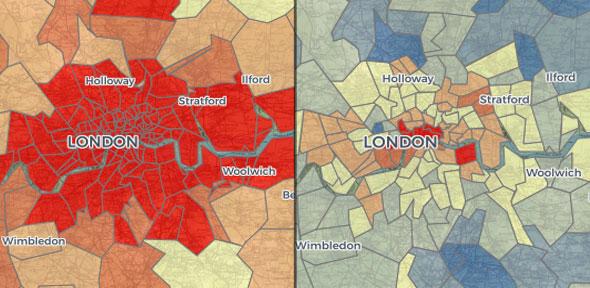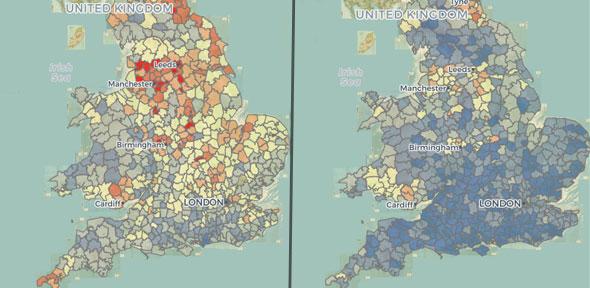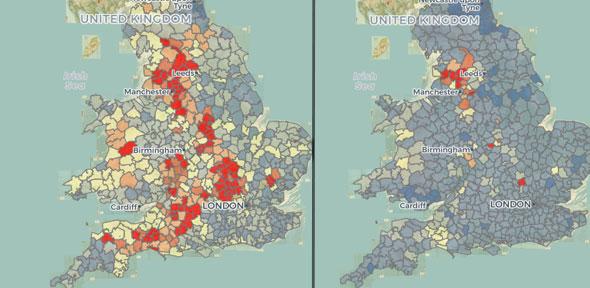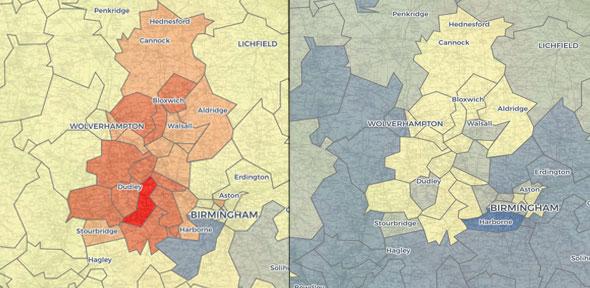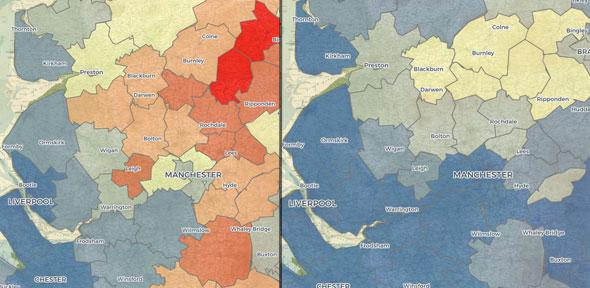
A new interactive online atlas, which illustrates when, where and possibly how fertility rates began to fall in England and Wales during the Victorian era has been made freely available from today.
A new interactive online atlas, which illustrates when, where and possibly how fertility rates began to fall in England and Wales during the Victorian era has been made freely available from today.
In 1851, more than one in five children born in parts of Greater Manchester did not survive to their first birthday. In parts of Surrey and Sussex however, the infant mortality rate at the same time was less than a third that number.
Alice Reid
The Populations Past website is part of the Atlas of Victorian Fertility Decline research project based at the University of Cambridge, in collaboration with the University of Essex. It displays various demographic and socio-economic measures calculated from census data gathered between 1851 and 1911, a period which saw immense social and economic change as the population of the UK more than doubled, from just under 18 million to over 36 million, and industrialisation and urbanisation both increased rapidly.
The atlas allows users to select and view maps of a variety of measures including age structure, migration status, marriage, fertility, child mortality and household composition. Users can zoom in to an area on the map and compare side-by-side maps showing different years or measures.
The maps reveal often stark regional divides. “Geography plays a major role in pretty much every indicator we looked at,” said Dr Alice Reid from Cambridge’s Department of Geography, who led the project. “In 1851, more than one in five children born in parts of Greater Manchester did not survive to their first birthday. In parts of Surrey and Sussex however, the infant mortality rate at the same time was less than a third that number.”
While there are broad north-south divides in most of the maps, patterns at a local level were more complicated: in the northern urban-industrial centres such as Manchester, infant and child mortality were high, while many rural areas of the north had mortality rates as low as rural areas of the south. And in London, there is a sharp east/west divide in fertility, infant mortality, the number of live-in servants, and many other variables.
The researchers also found that different types of industry were often associated with different types of families: in coal mining areas where there was little available work for women, women married young and often ended up with large families. In contrast, women in the textile-producing areas of Lancashire and Yorkshire had more opportunities to earn a wage, and perhaps consequently, had fewer children on average.
There are also big differences over time. The period saw a sharp drop in the number of women who continued to work after marriage, for instance. In 1851, more than a third of married women were in work across large sections of the country, but by 1911, only a tiny fraction of married women worked outside the home, apart from the textile-producing areas of the Northwest.
“This might be associated with the rise of the culture of female domesticity: the idea that a woman’s place is in the home,” said Reid.
Across the Western world, fertility rates have declined over the past 150 years. Gaining a historical perspective of how and why these trends have developed can help improve understanding of the way in which modern societies are shaped.
Between 1851 and 1911, England and Wales changed from countries where there were variable fertility and mortality rates to countries where rates for both were low. Child mortality and fertility fell from the 1870s, together with a fall in illegitimacy, but infant mortality did not start to fall until the dawn of the twentieth century.
As part of the project on fertility decline, the researchers have investigated fertility in more detail. For the first time, they have been able to calculate age-specific fertility rates for more than 2000 sub-districts across England and Wales during this era, and their results challenge views on the way that fertility fell.
“It’s long been thought that the fall in fertility was achieved when couples decided how many children they wanted at the outset of their marriage, and stopped reproducing once they had reached that number,” said Reid. “While this may have happened in more recent fertility transitions, such as in South-East Asia and Latin America, when reliable contraception was widely available, it was not a realistic scenario in the Victorian era.”
“We don’t find age patterns of fertility which would be produced by this type of ‘stopping’ behaviour during the Victorian fertility decline,” said Reid’s collaborator Dr Eilidh Garrett from the University of Essex. “Such behaviour would show up as a larger reduction of fertility among older women, but instead, women of all ages appear to have been reducing their fertility.”
As well as the interactive maps, the Populations Past site provides a variety of resources for researchers, teachers and students at all levels. The research was funded by the Economic & Social Research Council and the Isaac Newton Trust.

The text in this work is licensed under a Creative Commons Attribution 4.0 International License. For image use please see separate credits above.

